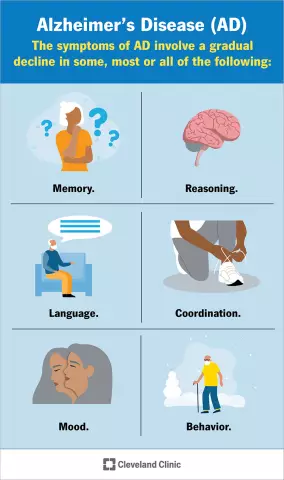- Author Rachel Wainwright [email protected].
- Public 2023-12-15 07:39.
- Last modified 2025-11-02 20:14.
Hypothermia
The content of the article:
- Causes
- Kinds
- Signs
- Diagnostics
- Treatment
- Prevention
- Consequences and complications
Hypothermia is a condition of the body that occurs as a result of a decrease in the central body temperature to a level below 35 ° C.
Normally, in humans, the temperature in the cranial cavity, the lumen of large vessels, the organs of the abdominal and thoracic cavity is maintained at a constant level - 36.7-38.2 ° C. This internal temperature is called the core temperature (or central temperature), and the hypothalamus is responsible for maintaining it at the proper level.
The temperature of the "shell" of the body (skeletal muscles, subcutaneous tissue, skin) is always lower than the central temperature by a few tenths of a degree, and sometimes by several degrees.

Degrees of hypothermia
Causes
The constancy of body temperature is maintained by the balance of heat production, that is, the ratio of heat production and heat transfer. If heat transfer begins to prevail over heat production, a state of hypothermia develops.
The main causes of hypothermia are:
- long-term regional or general anesthesia;
- prolonged exposure to cold, immersion in cold water;
- volumetric infusion of cold solutions, whole blood or blood products.

Hypothermia can develop from prolonged exposure to cold or immersion in cold water
The risk group for developing hypothermia includes:
- children;
- elderly people;
- persons in a state of alcoholic intoxication;
- patients in an unconscious state or immobilized (due to acute cerebrovascular accident, hypoglycemia, extensive trauma, poisoning, etc.).
In addition to pathological hypothermia resulting from hypothermia, there is therapeutic hypothermia. It is used to reduce the risk of irreversible ischemic tissue damage due to insufficient blood circulation. Indications for therapeutic hypothermia are:
- severe hypoxia of newborns;
- ischemic stroke;
- severe traumatic damage to the central nervous system;
- neurogenic fever due to brain injury;
- heart failure.
Kinds
Depending on the level of decrease in central temperature, hypothermia is divided into several types:
- light (35.0-32.2 ° C);
- medium (32.1-27 ° C);
- heavy (less than 27 ° C).
In clinical practice, hypothermia is divided into moderate and severe. With moderate hypothermia, the patient retains the ability to self-warming or passively. In severe thermoregulatory disorders, this ability is lost.
Signs
Signs of moderate hypothermia (body temperature - from 35.0 to 32.0 ° C):
- drowsiness;
- violation of orientation in time and space;
- apathy;
- muscle tremors;
- rapid breathing;
- tachycardia.
There is a spasm of the blood vessels (vasoconstriction) and an increase in the concentration of glucose in the blood plasma.

Hypothermia is characterized by drowsiness and lethargy
A further decrease in central temperature leads to inhibition of the functions of the respiratory and cardiovascular systems, impaired neuromuscular conduction, a decrease in mental activity and a slowdown in metabolic processes.
With a decrease in the central body temperature to 27 ° C or less, a coma develops, clinically manifested by the following signs:
- lack of tendon reflexes;
- lack of reaction of the pupils to light;
- an increase in the amount of urine separated (polyuria, cold diuresis) due to a decrease in the secretion of antidiuretic hormone, which increases hypovolemia;
- cessation of muscle tremors;
- drop in blood pressure;
- decrease in the frequency of respiratory movements to 8-10 per minute;
- severe bradycardia;
- atrial fibrillation.
Diagnostics
The main method for diagnosing hypothermia is to determine the central body temperature. In this case, one cannot be guided by the temperature readings in the axillary (axillary) region, since even in the normal state the difference between the central and axillary temperatures is 1-2 degrees. In hypothermia, it is even greater.
Central temperature is measured in the external auditory canal, esophagus, nasopharyngeal region, bladder or rectum using special electronic thermometers.

The main method for diagnosing hypothermia is measuring central body temperature.
To assess the general condition, existing metabolic disorders and functions of vital organs, a laboratory examination is carried out:
- general blood analysis;
- biochemical blood test with determination of urea, creatinine, glucose, lactate;
- coagulogram;
- blood test for acid-base balance and electrolyte levels (chlorides, magnesium, potassium, sodium);
- general urine analysis.
It is necessary to monitor the patient's condition (ECG control, pulse oximetry, measurement of blood pressure, body temperature, hourly measurement of urine output).
If there is a suspicion of damage to internal organs or bone fractures, an X-ray or computed tomography of the corresponding part of the body is indicated.
Treatment
With moderate hypothermia, the patient (if he is conscious) is placed in a dry, warm room and warmed by covering his head with a warm blanket, giving a hot drink. This may be enough.

In mild hypothermia, providing the patient with warmth and hot drinks is sufficient
In severe hypothermia, active warming of the patient should also be carried out, taking into account a number of points. You should not try to warm the victim as a whole, placing him, for example, in a bath with hot water, which will lead to the expansion of peripheral blood vessels and massive flow of cold blood into the great vessels and internal organs. As a result, there will be a sharp drop in blood pressure and a decrease in heart rate, which can be critical.
The most effective and safe way to warm the patient internally is by one of the following methods:
- inhalation of humidified and heated to 45 ° C oxygen through an endotracheal tube or mask;
- intravenous infusion of warm (40-42 ° C) crystalloid solution;
- lavage (washing) the stomach, intestines or bladder with warm solutions;
- chest lavage with two thoracostomy tubes (the most effective method of warming even in the most severe cases of hypothermia);
- lavage of the abdominal cavity with warm dialysate (indicated for patients with severe hypothermia, accompanied by severe electrolyte imbalance, intoxication or acute necrosis of skeletal muscle).

In severe hypothermia, active rewarming is indicated, such as inhalation of heated oxygen through a mask or endotracheal tube
Active internal warming should be stopped as soon as the central temperature reaches 34 ° C. This will prevent the development of a subsequent hyperthermic state. When carrying out active warming, an ECG control is necessary, since there is a high risk of heart rhythm disturbances (ventricular tachycardia, atrial fibrillation).
Prevention
Prevention of hypothermia includes measures aimed at preventing hypothermia:
- organization of the correct work and rest regime in the winter season for people working in the open air;
- use of warm clothing and dry shoes suitable for weather conditions;
- medical control over the condition of participants in winter sports competitions, exercises, military operations;
- organization of public heating points during frosts;
- refusal to drink alcohol before being in the cold;
- hardening procedures that improve adaptability to changing climatic conditions.
Consequences and complications
Hypothermia is a life-threatening condition, the consequences of which can be:
- Heart arythmy;
- swelling of the brain;
- pulmonary edema;
- hypovolemic shock;
- acute renal and hepatic failure;
- pneumonia;
- phlegmon;
- pyelonephritis;
- otitis;
- tonsillitis;
- arthritis;
- osteomyelitis;
- sepsis.

Elena Minkina Doctor anesthesiologist-resuscitator About the author
Education: graduated from the Tashkent State Medical Institute, specializing in general medicine in 1991. Repeatedly passed refresher courses.
Work experience: anesthesiologist-resuscitator of the city maternity complex, resuscitator of the hemodialysis department.
The information is generalized and provided for informational purposes only. At the first sign of illness, see your doctor. Self-medication is hazardous to health!






